Have you ever heard of Ophiuchus? Despite its lack of recognition in mainstream astrology, the constellation of Ophiuchus holds a rich history and significance in myths and folklore. Explore with us as we delve into the origins and symbolisms surrounding this enigmatic figure. From ancient Greek mythology to Egyptian folklore and even its role in modern astrology, Ophiuchus continues to intrigue and captivate us. Join us on this fascinating journey as we uncover the hidden meanings and unravel the misconceptions surrounding Ophiuchus, the serpent-bearer.
Contents
- The Origin of Ophiuchus
- Symbolism of Ophiuchus
- Significance in Ancient Myths
- Ophiuchus in Modern Culture
- Misunderstandings and Misconceptions
- Conclusion
-
Frequently Asked Questions
- 1. What are the dates for the Ophiuchus zodiac sign?
- 2. What does Ophiuchus represent in astrology?
- 3. Is Ophiuchus a water, fire, earth, or air sign?
- 4. How does Ophiuchus relate to work relationships?
- 5. What are the myths surrounding Ophiuchus in ancient Greek culture?
- 6. Are there any myths about Ophiuchus in Egyptian folklore?
- 7. How does Ophiuchus feature in Native American folklore?
- 8. How is Ophiuchus incorporated into modern astrology?
- 9. How does popular culture depict Ophiuchus?
- 10. What are some common misunderstandings about Ophiuchus?
- References
-
Frequently Asked Questions
- What is the significance of Ophiuchus in astrology?
- Why is Ophiuchus often excluded from the zodiac?
- What is the mythological origin of Ophiuchus?
- How is Ophiuchus represented in the night sky?
- What is the symbolism of the serpent in Ophiuchus?
- How does Ophiuchus relate to Greek mythology?
- What role does Ophiuchus play in Egyptian mythology?
- How does Ophiuchus appear in Native American folklore?
- How is Ophiuchus incorporated into astrology?
- How does Ophiuchus appear in pop culture?
- References
- Read More
The Origin of Ophiuchus
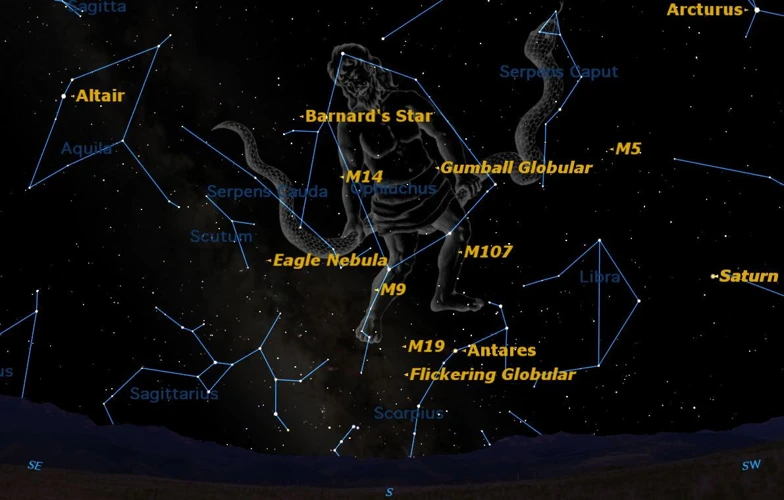
The Ophiuchus constellation, also known as the serpent-bearer, has a rich and intriguing origin. It is one of the thirteen constellations that cross the ecliptic, the apparent path of the Sun in the sky. The constellation itself is located near the celestial equator, making it visible from both the northern and southern hemispheres. In mythology, the origin of Ophiuchus can be traced back to ancient Greece. According to one legend, Ophiuchus is associated with Asclepius, the Greek god of medicine and healing. Asclepius was said to possess great knowledge and skill in the art of healing and was often depicted holding a serpent-entwined staff, which has become the symbol of medicine today. The association between Ophiuchus and healing is further emphasized by the constellation’s placement in the zodiac, which is believed to influence various aspects of human life, including health and well-being. The celestial serpent-bearer has long been a subject of fascination and mystery, and its symbolism and significance continue to captivate researchers and enthusiasts alike. To explore the symbolism and significance of Ophiuchus further, let’s delve deeper into its mythological origins and understand the role it plays in different cultures and societies throughout history.
The Ophiuchus Constellation
The Ophiuchus constellation, also known as the serpent-bearer, is a prominent and mesmerizing feature in the night sky. Situated between the constellations of Scorpius and Sagittarius, Ophiuchus is unmistakable due to its distinctive shape. It is depicted as a figure holding a serpent, with the snake winding its way around the central figure. The constellation consists of several bright stars, with the brightest being Rasalhague, which means “the head of the snake” in Arabic. Another prominent star is Barnard’s Star, one of the closest stars to our solar system. The Ophiuchus constellation is a part of the zodiac, even though it is not included in the traditional twelve zodiac signs. Its position near the celestial equator makes it visible from many locations worldwide. Astronomers and stargazers have long been fascinated by the mystical allure of Ophiuchus, and its symbolism and significance in mythology and astrology only add to its intriguing nature. To explore the impact of Ophiuchus on astrology and its role in various myths, let’s dive deeper into its mythological origins.
The Mythological Origins
To understand the mythological origins of Ophiuchus, we need to delve into various ancient cultures and their beliefs. In Greek mythology, Ophiuchus is often associated with the demigod Asclepius. According to the legend, Asclepius possessed exceptional healing abilities and was skilled in the art of medicine. Asclepius was so proficient in his craft that he could even revive the dead. This ability drew the attention of the gods, who feared that his power would disrupt the natural order of life and death. As a punishment, Zeus struck down Asclepius with a lightning bolt, but later, in recognition of his skills, placed him among the stars as the constellation Ophiuchus.
In Egyptian mythology, Ophiuchus has a different interpretation. The constellation is associated with Imhotep, a revered figure known as the “god of medicine” and a symbol of intellect and healing. Imhotep was believed to have been a great physician, architect, and advisor to the pharaoh Djoser. Due to his vast wisdom and contributions to medicine, Imhotep was deified after his death and later equated with the Greek god Asclepius.
In Native American folklore, the serpent-bearer is often linked to the healing powers of shamans. The serpent, a symbol of transformation and wisdom, plays a significant role in indigenous cultures. In some tribes, the serpent is seen as a spiritual guide, leading individuals on their path to enlightenment and healing.
The mythological origins of Ophiuchus showcase its association with medicine, healing, wisdom, and spirituality across different cultures. Exploring these diverse interpretations allows us to appreciate the depth and significance of Ophiuchus in mythology and its relevance in shaping our understanding of the stars. To explore further, let’s delve into the symbolism of Ophiuchus and the intriguing connections it has with astronomy and astrology.
Symbolism of Ophiuchus
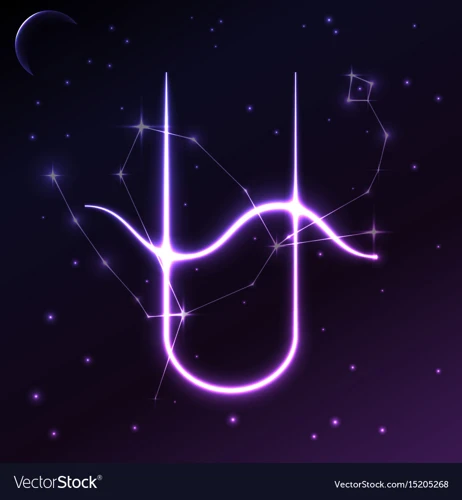
The symbolism of Ophiuchus holds deep meaning and significance. At the center of this symbolism is the serpent, which is prominently associated with Ophiuchus in various mythologies. In many cultures, the serpent represents transformation, healing, and knowledge. In Ophiuchus, the serpent is often depicted as being entwined around a staff, a symbol commonly associated with medicine and healing. This symbolism suggests the power of Ophiuchus to bring about transformation and restoration. Ophiuchus is also associated with the celestial realms, bridging the gap between the earthly and divine. This connection to the heavens signifies spiritual growth, enlightenment, and the pursuit of higher knowledge. In astrology, Ophiuchus is associated with elements such as fire, earth, air, and water, which further deepen its symbolic associations. These elemental associations highlight the diverse nature of Ophiuchus and its ability to encompass various aspects of life and the human experience. As we explore the symbolism of Ophiuchus, it becomes evident that its representation as a serpent-bearer and its connection to the celestial realms holds profound meaning and significance in different cultures and belief systems. To delve further into the symbolism of Ophiuchus and its influence, let’s examine its significance in ancient myths and its role in contemporary astrology.
The Serpent and the Healer
The Serpent and the Healer are two key elements that define the symbolism of Ophiuchus. In Greek mythology, the association between Ophiuchus and healing can be traced back to the story of Asclepius. Asclepius was a renowned figure in ancient Greek medicine, known for his ability to resurrect the dead using his knowledge of herbs and medicines. According to legend, Asclepius was taught the art of healing by Chiron, a wise centaur who possessed great knowledge of medicine and astrology. Asclepius became so skilled in the healing arts that he was able to revive the dead, provoking jealousy from the gods. In order to maintain balance, Zeus struck down Asclepius with a thunderbolt, turning him into a constellation that we now know as Ophiuchus.
The serpents entwined around Asclepius’ staff symbolize rejuvenation and regeneration, as snakes were believed to possess healing powers in ancient Greek mythology. This symbolism is reflected in the modern medical symbol, the caduceus, which features two snakes wrapped around a staff. The intertwining of the serpent and the healer represents the harmonious balance between life and death, sickness and healing.
In astrology, the serpent and the healer symbolism of Ophiuchus is also significant. Those born under the Ophiuchus sign are believed to possess a healing touch, often finding themselves drawn towards professions related to medicine, therapy, or helping others. Their compassionate and intuitive nature makes them natural healers and empathetic individuals. To understand the influence of Ophiuchus in different areas of life, including work relationships and astrology forecasting, you can explore related articles on our website for more in-depth insights.
Astronomy and Astrology
Astronomy and astrology play crucial roles in understanding the significance of Ophiuchus. From an astronomical perspective, Ophiuchus is a constellation located between Scorpius and Sagittarius. It is often represented as a figure holding a serpent, symbolizing the serpent-bearer. In astrology, Ophiuchus has gained attention due to its position along the ecliptic, intersecting with the zodiac. However, Ophiuchus is not recognized as an official zodiac sign in Western astrology, which primarily focuses on the twelve zodiac signs. Nonetheless, there are enthusiasts who believe that Ophiuchus should be considered as the thirteenth zodiac sign, highlighting its potential influence on astrological forecasting. Some embrace Ophiuchus as a symbol of healing and transformation, associating it with qualities such as wisdom, intuition, and a deep connection to the spiritual realm. It’s important to note that opinions on the inclusion of Ophiuchus in astrology remain diverse. While some individuals identify with the characteristics attributed to Ophiuchus, others view it as a subject of controversy and debate within the astrological community. Despite its unconventional status, Ophiuchus continues to spark interest and intrigue among those who delve into the intersection of astronomy and astrology. To explore the impact of Ophiuchus in different areas, such as work relationships and elemental associations, continue reading our in-depth articles: “Ophiuchus Sign and Work Relationships” and “Elemental Associations of Ophiuchus.”
Significance in Ancient Myths
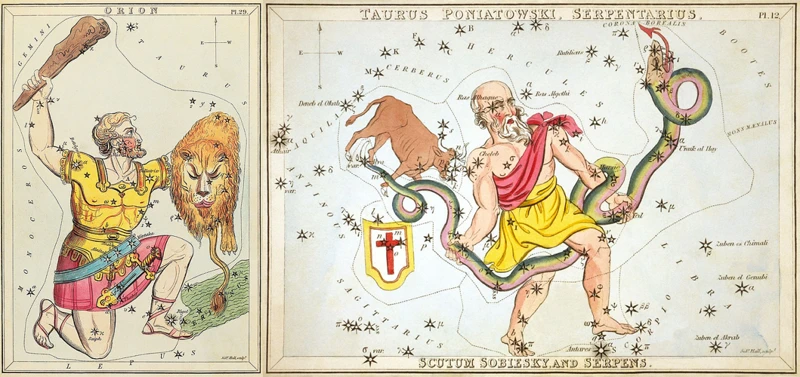
The significance of Ophiuchus in ancient myths is vast and diverse, spanning across various cultures and civilizations. In Greek mythology, Ophiuchus is associated with the legendary figure of Asclepius, the god of medicine and healing. Asclepius was believed to have the power to resurrect the dead, a feat that angered the gods. In response, Zeus feared that mortals would become immortal if Asclepius continued his miraculous healing practices. Consequently, Zeus struck down Asclepius with a lightning bolt. However, in recognition of his exceptional skills, Zeus immortalized Asclepius by placing him among the stars as the constellation Ophiuchus, forever honoring his role as the healer.
In Egyptian mythology, Ophiuchus has been identified with Imhotep, an Egyptian deity known as the god of medicine, wisdom, and architecture. Imhotep was believed to possess incredible healing abilities and was revered as a sage and a priest. Just as in Greek mythology, the association between Ophiuchus and healing is evident in this ancient Egyptian belief system.
Native American folklore also holds significance for Ophiuchus. Some Native American tribes associate the constellation with the figure of a serpent and believe it represents a powerful healing spirit that brings wisdom and knowledge. The serpent is seen as a symbol of transformation and renewal in many Native American cultures, further accentuating the connection between Ophiuchus and healing.
The significance of Ophiuchus in ancient myths highlights the importance of healing and wisdom in various cultures throughout history. Its presence among the constellations serves as a reminder of the power and value of medicine, knowledge, and the human capacity to heal. To explore further how Ophiuchus influences astrology and its forecasting capabilities, click here: The Influence of Ophiuchus in Astrological Forecasting.
Ophiuchus and Greek Mythology
Ophiuchus and Greek mythology are intricately intertwined, as Ophiuchus is associated with the Greek god of medicine and healing, Asclepius. According to ancient Greek mythology, Asclepius was the son of Apollo, the god of the sun, and Coronis, a mortal woman. Asclepius possessed incredible healing abilities and became renowned for his ability to revive the dead. However, his power caught the attention of Hades, the god of the underworld, who grew concerned that Asclepius’s endeavors threatened the natural order of life and death. In response, Zeus, the king of the gods, decided to put an end to Asclepius’s actions and struck him down with a thunderbolt. After his death, Asclepius was honored and immortalized in the night sky as the constellation Ophiuchus. In Greek mythology, Ophiuchus represents not only the figure of Asclepius but also the wisdom and knowledge associated with medicine and healing. The serpent-entwined staff, known as the Rod of Asclepius, has become a symbol of medicine and healthcare to this day. The influence of Ophiuchus in Greek mythology highlights the importance placed on healing and the deep respect held for those who possessed the ability to alleviate suffering and restore health.
Ophiuchus in Egyptian Mythology
Ophiuchus also has a connection to Egyptian mythology, where it is believed to represent the figure of Imhotep, the Egyptian god of medicine, wisdom, and healing. Imhotep was an incredibly influential figure in ancient Egypt and was deified after his death for his contributions in the field of medicine. He was often depicted as a man holding a staff with a serpent wrapped around it, similar to the imagery associated with Ophiuchus. Imhotep’s abilities in healing and his association with serpents align closely with the symbolism and characteristics attributed to the constellation of Ophiuchus. In Egyptian mythology, serpents were seen as powerful symbols of protection and transformation, representing the cycle of life, death, and rebirth. The connection between Ophiuchus and Imhotep demonstrates the significance placed on healing and the importance of the serpent symbolism in ancient Egyptian culture. The mythological ties between Ophiuchus and Egyptian mythology highlight the enduring legacy and impact of this celestial figure throughout history.
Ophiuchus in Native American Folklore
Ophiuchus holds a special place in the mythology of Native American tribes as well. Among the Lakota Sioux tribe, Ophiuchus is known as the “Wakinyan Tanka” or the “Great Thunderbird.” The Thunderbird is a powerful and revered creature believed to have control over the elements, particularly thunder and lightning. In their folklore, the Thunderbird is seen as a symbol of strength, protection, and spiritual guidance. It is often associated with healing ceremonies and considered a messenger between the spiritual and physical realms. The Thunderbird is depicted as a large bird with outstretched wings, its feathers glowing with vibrant colors. It is believed that the Thunderbird uses lightning bolts to punish wrongdoers and restore balance to the world. In Native American folklore, Ophiuchus represents the connection between the earth and the sky, carrying the power of healing and protection. The significance of Ophiuchus in Native American cultures is a testament to its enduring influence and symbolism across different mythologies throughout history.
Ophiuchus in Modern Culture
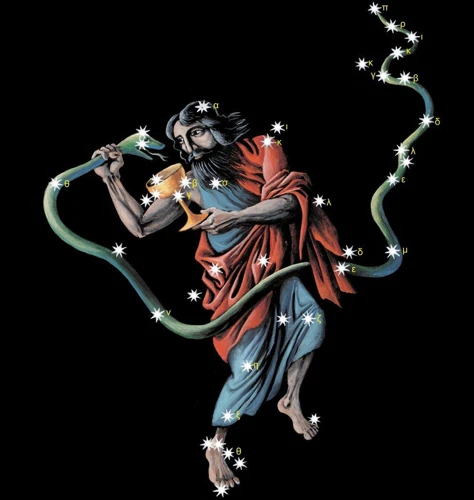
Ophiuchus, despite its lack of recognition in traditional astrology, has gained notable attention in modern culture. As astrology continues to evolve and adapt, there are those who recognize and incorporate Ophiuchus as a thirteenth zodiac sign. This alternative perspective suggests that individuals born between November 29th and December 17th fall under the influence of Ophiuchus. Although not widely accepted, this reinterpretation has sparked interesting discussions and debates among astrologers and enthusiasts alike.
Ophiuchus has also made its way into popular culture. It has appeared in various forms of media, such as literature, art, and even video games. The serpent-bearing constellation has captured the imagination of many, who are drawn to its symbolism and mystique. Some artists have depicted Ophiuchus as a guardian of balance and healing, while others have explored its connection to ancient myths and legends.
In the realm of astrology, Ophiuchus is recognized by some as a sign that signifies spiritual growth, transformation, and the quest for knowledge. It is believed to possess traits such as intuition, wisdom, and healing abilities. Those who identify with Ophiuchus may feel a sense of connection to these qualities and may use them as a guide in their personal and spiritual journeys.
While Ophiuchus may not be widely acknowledged in mainstream astrology, its presence in modern culture serves as a reminder of our ever-evolving understanding and interpretation of the cosmos. Whether embraced as a thirteenth zodiac sign, appreciated for its symbolism and significance, or simply enjoyed as a subject of fascination, Ophiuchus continues to leave its mark in the world of astrology and beyond.
Ophiuchus in Astrology
Ophiuchus in astrology is a topic of debate and speculation. Traditional Western astrology is based on the twelve Zodiac signs that correspond to specific dates of the year. However, Ophiuchus lies between Scorpio and Sagittarius and is often referred to as the “thirteenth” Zodiac sign. Those who believe in the inclusion of Ophiuchus argue that it brings about a shift in astrological projections and characteristics. According to some astrologers, individuals born under Ophiuchus are said to possess traits such as wisdom, intuition, and a desire for knowledge. They are seen as healers and are often regarded as having a deep connection to spirituality. However, it is important to note that mainstream astrology does not officially recognize Ophiuchus as a Zodiac sign. As a result, its influence in astrological forecasting and horoscopes remains a topic of contention within the astrological community. Whether Ophiuchus is seen as a legitimate Zodiac sign or not, its inclusion or exclusion continues to spark discussions and intrigue among astrology enthusiasts.
Pop Culture and Ophiuchus
Pop culture has also embraced the mystical allure of Ophiuchus, incorporating it into various forms of media and entertainment. In recent years, Ophiuchus has gained attention and sparked conversations within the astrology community and beyond. While it is not officially recognized as a zodiac sign within traditional astrology, many people have begun to explore its potential influence on individual personalities and cosmic energies. Ophiuchus has become a popular topic of discussion on social media platforms, where users speculate about the characteristics and traits associated with this “new” zodiac sign. Artists and writers have incorporated Ophiuchus into their works of fiction, showcasing its enigmatic nature in novels, movies, and television shows. The inclusion of Ophiuchus in pop culture serves as a testament to its enduring fascination and the ongoing exploration of the cosmos and its mystical elements. Whether regarded as a symbol of healing and wisdom or as an intriguing addition to the zodiac, Ophiuchus continues to captivate the imagination of people around the world.
Misunderstandings and Misconceptions
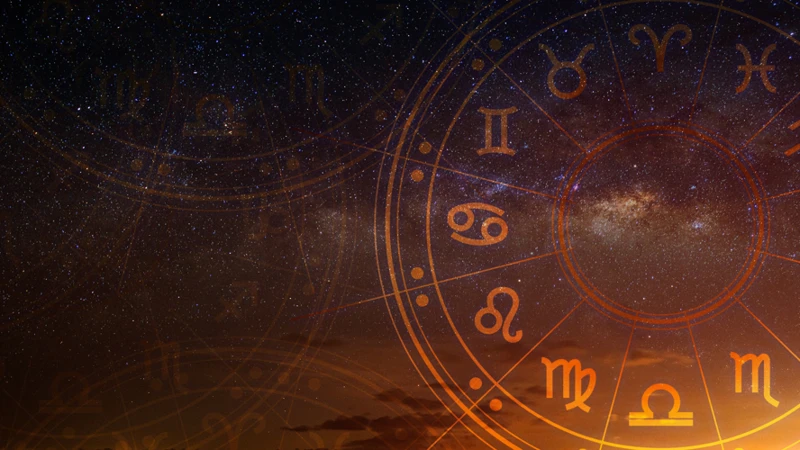
Misunderstandings and misconceptions surrounding Ophiuchus have caused confusion and controversy over the years. One prevalent misunderstanding is the belief that Ophiuchus is a new zodiac sign. While it is true that Ophiuchus is a constellation that crosses the ecliptic, it is not officially recognized as a zodiac sign in Western astrology. This misconception arose from an inaccurate interpretation of the zodiac system, which consists of twelve equally divided signs. Despite the lack of recognition, some individuals embrace Ophiuchus as an additional sign and associate it with unique characteristics and traits. Another misconception is that Ophiuchus signifies a major shift in astrological forecasting. This idea suggests that the rise of Ophiuchus will have a profound impact on individual horoscopes and predictions. However, astrologers argue that the zodiac system and its interpretations remain unchanged, and Ophiuchus does not play a significant role in astrological forecasting. It is essential to separate fact from fiction when discussing Ophiuchus and understand its actual position and influence within astrology. By dispelling these misunderstandings, we can better appreciate and interpret the symbolism and significance of this enigmatic constellation.
The Missing Zodiac Sign
The concept of the missing zodiac sign is a common misconception that revolves around Ophiuchus. Many people believe that Ophiuchus should be recognized as the thirteenth zodiac sign, replacing another sign in the traditional zodiac wheel. However, this belief is not accurate. In reality, the zodiac system we commonly know today consists of twelve signs, which are each associated with a specific time period of the year. These signs include Aries, Taurus, Gemini, Cancer, Leo, Virgo, Libra, Scorpio, Sagittarius, Capricorn, Aquarius, and Pisces. Ophiuchus exists outside this traditional zodiac wheel and does not hold the status of an official zodiac sign. Despite the popularity of the notion that there is a missing sign, Ophiuchus should not be considered as such. It is important to distinguish between the myths and folklore surrounding Ophiuchus and the well-established zodiac system that has been followed for centuries. The inclusion of Ophiuchus in astrology is a separate concept altogether, and astrology enthusiasts have varying interpretations of its significance and influence. The missing zodiac sign is simply a misunderstanding that has gained traction in popular culture. Instead of seeing Ophiuchus as a replacement for another zodiac sign, it is more accurate to view it as a unique and distinct constellation with its own symbolism and meaning.
Astrological Shifts and Ophiuchus
Astrological shifts and Ophiuchus have been a topic of discussion and debate among astrologers and enthusiasts. With the recent recognition of Ophiuchus as the thirteenth zodiac sign, many have questioned the implications and effects of this new addition. It’s important to note that astrology is a complex system that has evolved over centuries, and the inclusion of Ophiuchus brings about adjustments and changes in astrological interpretations. This shift stems from the precession of the equinoxes, a phenomenon where the Earth’s axis slowly rotates over a long period of time. As a result, the positions of the constellations in the sky change relative to Earth. Some argue that Ophiuchus was excluded from the zodiac because the Babylonians wanted to fit their twelve-month calendar neatly into the year. However, others contend that Ophiuchus was intentionally left out due to its position on the ecliptic, which does not align with the traditional twelve signs of the zodiac. Regardless of the reasoning behind its exclusion, the recognition of Ophiuchus has sparked conversations about its influence on astrological forecasting and horoscopes. Some claim that those born under Ophiuchus have unique personality traits and characteristics associated with the serpent-bearer, while others argue that the addition of Ophiuchus may disrupt the established and widely accepted astrological framework. It is worth noting that astrological interpretations and beliefs can vary significantly from person to person, and whether Ophiuchus has a significant impact on individual birth charts is a matter of personal belief and interpretation. In the ever-evolving field of astrology, the inclusion of Ophiuchus has prompted discussions about the nature of astrological systems and the ways in which they may adapt to reflect new understandings of the celestial realm.
Conclusion
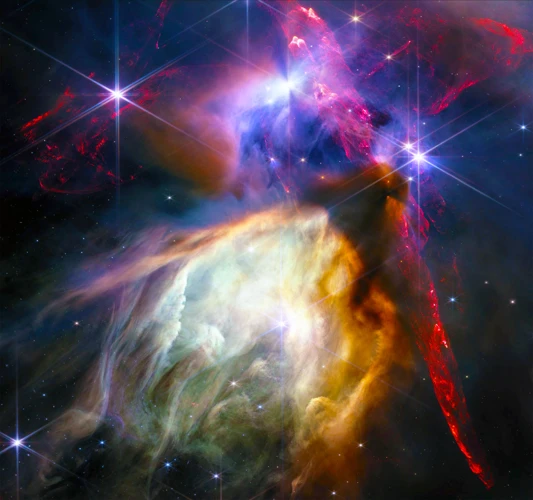
In conclusion, Ophiuchus holds a unique and intriguing place in myths, folklore, and astrology. It is a constellation that has captured the imaginations of people for centuries. The origins of Ophiuchus can be traced back to ancient Greek mythology, where it is associated with the god of medicine and healing, Asclepius. This connection to healing has been further emphasized through its placement in the zodiac, where it is believed to influence health and well-being. Ophiuchus also has a presence in other mythologies, including Egyptian and Native American folklore, adding to its significance and symbolism. Despite its rich history and cultural significance, Ophiuchus is often overlooked in mainstream astrology. However, it continues to generate interest and curiosity among those who study and explore the mysteries of the cosmos. Whether you see Ophiuchus as a missing zodiac sign, a symbol of healing, or a subject of mythological fascination, there is no denying its enduring allure. It serves as a reminder of the vastness and complexity of the universe and the unending quest for knowledge and understanding.
Frequently Asked Questions
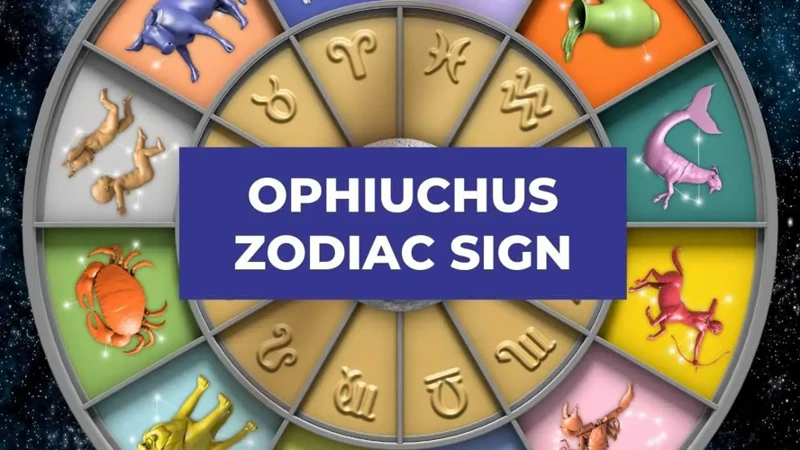
1. What are the dates for the Ophiuchus zodiac sign?
Ophiuchus is not officially recognized as a zodiac sign in mainstream astrology. The traditional zodiac consists of twelve signs, and Ophiuchus falls outside of this system.
2. What does Ophiuchus represent in astrology?
Ophiuchus is often associated with healing and wisdom. Those born under the Ophiuchus constellation are believed to possess natural healing abilities and a deep spiritual connection.
3. Is Ophiuchus a water, fire, earth, or air sign?
Ophiuchus does not have an assigned element in astrology. The elemental associations for Ophiuchus are not as firmly established as those for the traditional zodiac signs.
4. How does Ophiuchus relate to work relationships?
While Ophiuchus is not traditionally included in astrological analysis, some individuals may choose to explore the influence of Ophiuchus in work relationships. This can involve studying the characteristics associated with the constellation and considering their impact on interpersonal dynamics.
5. What are the myths surrounding Ophiuchus in ancient Greek culture?
In Greek mythology, Ophiuchus is often associated with the demigod Asclepius, who was renowned for his healing skills. The myth tells the story of Asclepius using serpents for healing purposes and ultimately being immortalized in the stars as the constellation of Ophiuchus.
6. Are there any myths about Ophiuchus in Egyptian folklore?
While there is limited information about Ophiuchus in Egyptian mythology, it is believed that the constellation was associated with the god Imhotep, who was revered as a healer and a wise sage.
7. How does Ophiuchus feature in Native American folklore?
Native American tribes have their own unique traditions and folklore, and Ophiuchus does not have a widely recognized role in their mythology. However, some tribes may have stories or beliefs related to serpents and their symbolism.
8. How is Ophiuchus incorporated into modern astrology?
In modern astrology, Ophiuchus is not part of the traditional zodiac system. However, some astrologers may choose to include Ophiuchus and interpret its influence on individuals’ astrological charts and horoscopes.
9. How does popular culture depict Ophiuchus?
Ophiuchus has gained some recognition in popular culture in recent years. It is often depicted as an additional zodiac sign beyond the traditional twelve, sparking curiosity and inspiring creative interpretations in various media forms.
10. What are some common misunderstandings about Ophiuchus?
One common misunderstanding is that Ophiuchus is considered a new zodiac sign. Another misconception is that all astrologers recognize and incorporate Ophiuchus into their practice, whereas it remains a more niche and debated aspect of astrology.
References
Frequently Asked Questions

What is the significance of Ophiuchus in astrology?
Ophiuchus is a constellation that represents a mythical healer and symbolizes spiritual transformation and enlightenment. In astrology, it is believed to possess unique traits and influences.
Why is Ophiuchus often excluded from the zodiac?
Ophiuchus is excluded from the zodiac due to the traditional division of the ecliptic into twelve equal parts. However, some astrologers acknowledge its existence and consider it as the thirteenth zodiac sign.
What is the mythological origin of Ophiuchus?
Ophiuchus originates from ancient Greek mythology and is associated with the Asclepius, the god of medicine and healing. The constellation represents him holding a serpent, which symbolizes his powers of transformation and rejuvenation.
How is Ophiuchus represented in the night sky?
Ophiuchus is represented as a constellation that looks like a man holding a serpent. It is located between the constellations of Scorpius and Sagittarius and can be observed in the northern hemisphere during certain times of the year.
What is the symbolism of the serpent in Ophiuchus?
The serpent in Ophiuchus represents healing and rebirth. It symbolizes the shedding of old skin and the transformative powers of the healer. It is also associated with knowledge, wisdom, and the dual nature of life and death.
How does Ophiuchus relate to Greek mythology?
In Greek mythology, Ophiuchus is associated with Asclepius, the god of medicine and healing. Asclepius was known for his ability to resurrect the dead, which brought him the attention of the gods and resulted in his transformation into the constellation of Ophiuchus.
What role does Ophiuchus play in Egyptian mythology?
In Egyptian mythology, Ophiuchus is linked to the god Imhotep, who was also associated with healing and medicine. Imhotep, considered the first physician, was deified after his death and became a powerful figure worshipped for his healing abilities.
How does Ophiuchus appear in Native American folklore?
In Native American folklore, Ophiuchus is often connected to the Snake Dance, a ceremony performed by certain tribes to ensure the arrival of rain. The constellation represents the power of transformation and its association with water and fertility.
How is Ophiuchus incorporated into astrology?
In astrology, Ophiuchus is sometimes considered as the thirteenth zodiac sign, with its own unique characteristics and influences. Those born under Ophiuchus are believed to possess traits such as wisdom, intuition, and a capacity for spiritual growth.
How does Ophiuchus appear in pop culture?
Ophiuchus has made appearances in various forms of pop culture, including literature, movies, and music. It is often used as a symbol of hidden knowledge, spiritual awakening, and the pursuit of enlightenment.
References
- Ophiuchus, the 13th Sign of the Zodiac – BBVA Openmind
- Ophiuchus Sign Mythology, History, and Meaning






